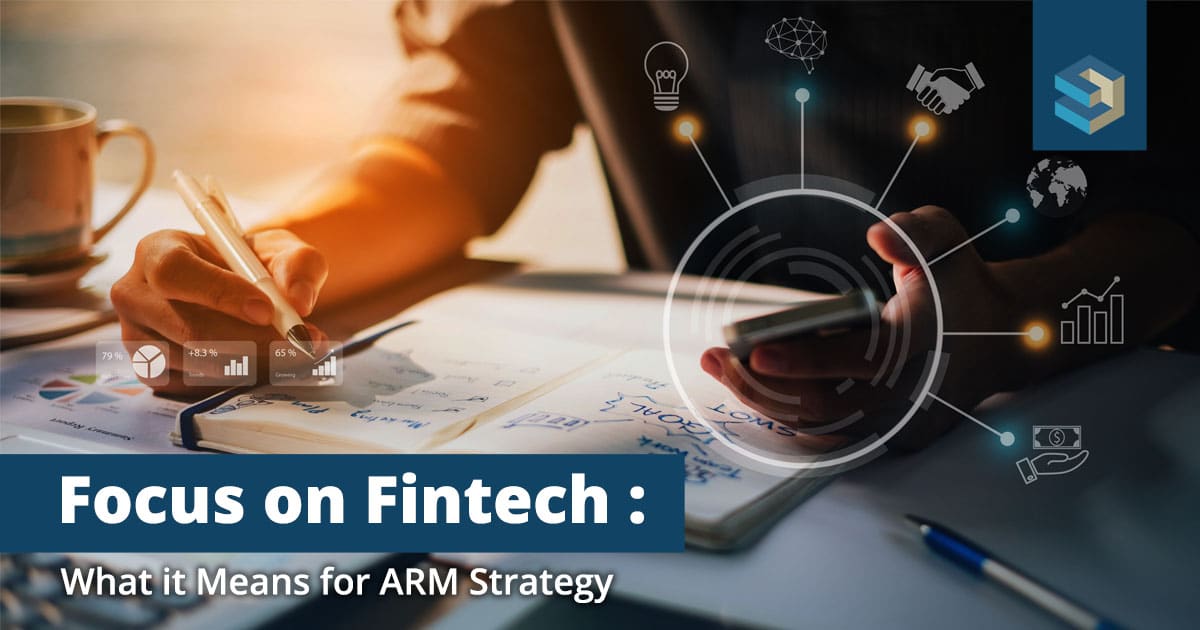Fintech lenders have gained a solid footing in the financial industry over the last decade and continue to transform the landscape of consumer finance options and ease of access for borrowers. While fintechs have been rising startup stars for years, more are gaining traction as the lines are increasingly blurring between banks and fintechs. In this article, we’ll take a look at what fintechs are, how they’re changing, the ways their presence impacts consumers, and how this all leads to specialized recovery solutions in the delinquency and charge-off stages of the credit cycle.
What is Fintech?
Fintech is a broad term for the intersection of finance and technology and encompasses a range of services, solutions, and business models. Specific to the lending space, modern fintech companies have leveraged technology and an increased ability to gather multiple data points quickly to present a fast, convenient online consumer experience and maneuver nimbly under less regulation and bureaucracy than traditional banks.
Digital lenders do, however, often partner with traditional banks to transfer assets post-origination as part of their funding strategies. And while the backend structure of these companies varies from company to company and differs significantly from that of traditional banks, the servicing components of fintechs and banks are generally quite similar.
How is Fintech Changing the ARM Industry?
In recent times, the tables have turned in fintech’s favor enough that some fintechs are buying banks (or “legacy financial services businesses”) rather than the reverse. Some are also becoming more institutional as they transition from startups to established, more profitable businesses. Those acquiring banks must adjust to FDIC regulations and learn from the banking side to succeed.
As companies that have largely operated in a startup environment, many have focused primarily on the origination side of new credit to generate sufficient profitability for growth. As there are increasingly more that have succeeded and been in the space longer, a longer-term view is becoming more important. Once-lean operations may need to beef up more which often leads to greater formalization in and of itself. For those companies that decide to integrate more vertically across the lifecycle of the loans and build out frameworks that are more balanced toward the back end of the credit cycle, this introduces more operational workflows to consider and increased regulation.
A Focus on Consumer Experience
Digital lending as it currently exists is born of new opportunities in cloud computing, digital-native origination capabilities, rapid access to alternative consumer data, software and platform developments, API innovations, and consumer demand for rapid, web-based financial management. The fast and convenient consumer experience for a broad set of borrowers is the prime selling point for fintech lenders.
Meeting consumers where they are (online), simplifying the application process, and streamlining the data gathering and approval process has allowed fintech lenders to disburse funds for unsecured consumer loans fast—often within 1-3 days. Overhead savings also help to keep fees and interest rates lower. Even when APRs are slightly higher than traditional banks, consumers seeking near-instant financial solutions are often willing to settle in exchange for easier approvals and faster cash-in-hand.
A New Kind of Online Consumer
With consumer preference increasingly focused on digital communications, instant feedback, and ease of use, fintech lenders have worked through savvy marketing, intuitive user experiences, and evolving technology platforms to gain the trust of consumers and establish their consumer-facing status as reputable, legitimate lending alternatives.
The results have been strong as more and more consumers have had positive experiences and these alternative lending options have become a new norm. As some percentage of any type of credit account will inevitably end in default, this has brought new types of consumers and account considerations down the line in the receivables management industry.
Building Specialized Recovery Strategies
The traditional models of purchasing, collecting, and litigating distressed accounts originated by fintech companies are generally the same as for legacy credit institutions. However, the servicing and chain of title can become complex due to the common transfer of the asset soon after origination. This practice, however, is seen in other asset classes as well and is not unique to fintech. Keeping these workflows and data transfers seamless and well-integrated from the start is generally quite possible and well in effect due to the tech-forward, innovative posture of the fintech space.
From a servicing standpoint, consumers expect collections to be in line with the same way they borrowed. Leveraging digital strategies becomes even more important, as does the ongoing effort toward increasing consumer financial literacy. As with any type of credit, and especially a type that allows faster decisions and more access for subprime borrowers, what can be a blessing for one can be a burden for another. The difference is in understanding and making solid choices about when/how much to borrow, and when not to borrow. The role of the lender is not to control consumer choice but to educate and inform while continuing to perform a critical function of the lending cycle as we help to protect the credit ecosystem for all consumers.
Plaza Services is an experienced leader in the purchase and management of multiple types of receivables including fintech portfolios. We establish systematic purchase flows as well as one-time transactions to return value to creditors through the purchase of performing and non-performing accounts receivable.
About Plaza Services
Plaza Services, LLC is a nationally licensed, professional receivables management firm located in Atlanta, GA. We are a Certified Receivables Business (CRB) by Receivables Management Association International and specialize in the acquisition and servicing of consumer and commercial portfolios. Plaza Services delivers quick portfolio evaluations, seamless transaction execution, and clear accountability after the sale. As a SOC 2 certified receivables management firm, we are committed to the security, confidentiality, and safety of our consumers’ information.


